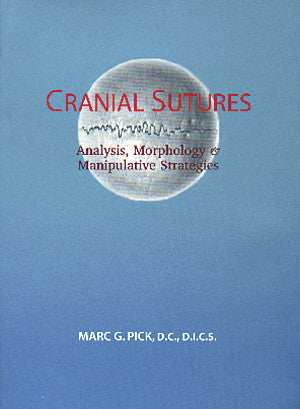
Cloth
ISBN: 0-939616-65-3
978-0-939616-65-7
Cranial Osteopathy: A Practical Textbook
- PDF This eBook is available exclusively as a PDF and is readable with the free Javelin PDF Reader, accessible from your Account page after purchase. See eBook FAQs for details.
Description
Cranial Osteopathy is both a textbook for practical training as well as an in-depth reference book, providing the knowledge base for successful application of cranial osteopathy. Designed with the practitioner in mind, it provides a comprehensive compilation of recent studies and research in this field, with extensive resource materials and nearly 500 illustrations and photographs.
This book will deepen your practice of cranial osteopathy in the following ways:
- Enable better assessment of responses to treatment
- Enable a more integral palpatory approach to the patient, with a deepening of the different dimensions of touch and resonance
- Enable better differentiation in the cranial examination of patients
- Facilitate the process of conscious listening during palpation
- Clarify the act of therapeutic synchronization with the homeodynamic forces in the tissues
- Provide a better understanding of the stages of growth and modes of ossification of bones, which explain certain windows of time in treatment
- Provide a more precise understanding of sutures to enable more satisfactory delivery of treatment
Contents
- Foundations of Osteopathy in the Cranial Field
- Primary Respiratory Mechanism
- Rhythm and the Cranium: Measurements, Hypotheses, and Studies
- The Cranium
- Anatomy, Ossification, and Articulations of the Individual Bones of the Cranium, Sacrum, and Coccyx
- Cranial Sutures
- Cranial and Spinal Membranes
- Cranial Vascularization and Lymph Drainage
- Anatomy and Physiology of the Cerebral Ventricles and CSF
- Cranial Bone Mobility and Flexibility
- Palpation: The Art and Practice of Feeling
- Diagnostic Principles
- Treatment Principles
- The Treatment Sequence and Reactions to Treatment
- General Palpation of the Head and Sacrum
- The Fluid Body
- Anatomy and Treatment of Transverse Diaphragms
- Anatomy and Treatment of Sacral Articulations
- Techniques to Improve Circulation
- Treatment of the Dura
- Dysfunctions of the Cranial Base
- Palpation and Treatment of the Sphenooccipital Synchondrosis
- Treatment of the Cranial Sutures
Reviews
"Torsten has honored me by asking me to write a foreword to his book. I am impressed with the range and extent of the subject matter, and his grasp of order in learning the science of osteopathy, and particularly the basic principles upon which it operates. He [Torsten] easily grasps that the human body is designed to work correctly, and that it is not the operator’s job to make it work right. The physician’s role is to encourage and assist the body to do what it knows how to do best, which is to work correctly, thereby regaining good health.
Torsten also understands the basic truth of palpation: ‘You do not feel with your fingers, you feel with your brain through your fingers, or whatever part of the body you are utilizing to contact the patient’s body.’ I feel certain that when this book is printed and available to the profession, it will become a basic text for all future students of the science of osteopathy."
—Alan R. Becker, D.O., F.A.A.O., F.C.A.
"Torsten's completion of the third, enlarged edition of his book on cranial osteopathy is to be welcomed. It is important to make the knowledge about the human head available to all osteopaths.
Because the endoskeletal articular system of the human body is fundamental for the activities of life as a whole, osteopathy has something useful to offer for every part. It is 60 years since W.G. Sutherland, D.O., D.Sc. (Hon.), began to teach osteopathy in the cranial field. His teachings are now being carried forward by the present book.
Dr. Sutherland taught that 'the aim of osteopathic treatment is to achieve an efficient exchange between all the fluids of the body across all boundaries. This view includes postural mechanics as well as the microscopic field.'"
—Anne L. Wales, D.O., Editor of W.G. Sutherland's Teachings in the Science of Osteopathy and Contributions of Thought:The Collected Writings of W.G. Sutherland


